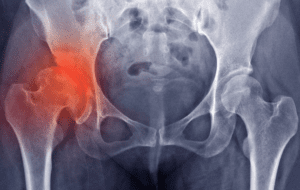When pain persists, it often gets stronger and lasts longer. Attempts to relieve pain typically address both the physiological and the psychological aspects of pain. Prolotherapy usually requires several shots at the site of the injury or weakened area to be effective. An individual can expect anywhere from 4 to 15 shots per session, and for several sessions to occur over the course of 3 to 6 months. The main symptoms of osteoarthritis are joint pain and stiffness, and problems moving the joint. Some people also have symptoms such as: - swelling - tenderness - grating or crackling sound when moving the affected joints. The severity of osteoarthritis symptoms can vary greatly from person to person, and between different affected joints. It's important to stay well-nourished and active, even if you are in pain. Having a good diet will help improve the way your medications work, help reduce side effects, and help you maintain the energy you need to carry out your daily activities. In persistent pain, even though the original trigger for the pain may have stopped, the other factors are still there, so the brain becomes over-protective and keeps the pain going. It’s a bit like the brain struggling to turn down the ‘volume control’.
Pain can be a side effect of treatment. There is much debate about whether people with persistent pain die prematurely and why this might happen. Once a pain medication is started, it should be monitored for effectiveness and side effects and the dosage or choice of treatment modified if the pain changes or the choice is deemed unsuitable or ineffective. When pain strikes, the individual has many options that are intended to end the pain. Treatments such as Knee Cartilage can really help a patients quality of life.
Irregular Heartbeat
Stress can play a major role in chronic pain, so it’s important to try to reduce your stress as much as possible. Everyone has different techniques for managing their stress, but some techniques include meditation, mindfulness and deep breathing. Try different options until you find what works best for you. Some people feel pain all or most of the time, and it's always in the background. It can be difficult for them to cope when it flares up. It's important to learn the things that make your pain worse – often called pain "triggers" – so you can find ways to manage them. It's better to take a balanced approach to being active, so you don't do too much or too little. The process of aging in a population is accompanied by a rising prevalence of chronic and degenerative diseases and, consequently, a higher incidence of conditions characterised by pain and inflammation. Prolotherapy treatment consists of a series of injections into joints, ligaments, or tendons to promote the growth of connective tissues in the body. Like all medical procedures, there are some risks and side effects associated with prolotherapy. However, these risks are minimal, especially when compared to the far greater dangers of surgery. Prolozone is a non-surgical regenerative injection therapy used to stimulate the healing of musculoskeletal conditions and pain. Its benefits include improved joint function, increased range of motion, and decreased pain. Healthcare providers recommend holistic treatments such as PRP Injection as an alternative to traditional painkillers.
Psychotherapy can help with the emotional side of ongoing pain. Chronic pain often reduces the enjoyment of everyday activities and makes working difficult. Also, studies have found that chronic pain can lead to depression and that depression intensifies chronic pain. In its most basic form, the term break-through pain is used to describe a pain that "breaks through" the ceiling of pain relief that is provided by other means. Abnormalities on scans aren’t necessarily the reason for pain. Even how you are told about these scan results can cause pain. We know that self management is one of the things that can most improve the lives of people living with pain, but all too often it’s not being put into practice successfully. Chronic pain reduces a person’s ability to live their lives the same quality and extent that they enjoy. Knowing your options and treatment availability is important to maintaining the lifestyle you deserve and to keep you doing the things you love. Many people in pain turn to PRP Treatment for solutions to their sports injuries.
Pain At The End Of Life
Acute pain means the pain lasts for three months or less (sometimes up to six months). Soft tissue injuries or illnesses can frequently result in mild pain, so pain typically dissipates when the injury or illness resolves. If an injury is not treated correctly, it may turn into chronic pain. back pain, rotator cuff injuries, degenerative and arthritic hips and knees, degenerated discs, and shoulder and elbow pain. Chronic pain localized to the lower abdominal, groin, or perineal region is a common clinical entity with multiple causes. Smoking can worsen painful circulation problems and increase risk of heart disease and cancer. Beliefs about the body and pain play a powerful role in behavioural and emotional responses to musculoskeletal pain. What a person believes and how they respond to their musculoskeletal pain can influence how disabled they will be by pain. People experiencing persistent pain have had it alleviated with a Prolotherapy treatment.
Pain is not something we must be stuck with. It is the product of operator error, an error we can learn to correct. You have far more control than you know. The reality is that not everything, drugs included, works for every pain condition. Some work better for nerve pain while others work better for soft tissue damage or joint injuries. It is very important to discover what sort of pain you are suffering from, because this may affect the type of treatment you need. Chronic pain is pain that is ongoing and usually lasts longer than six months. This type of pain can continue even after the injury or illness that caused it has healed or gone away. Pain signals remain active in the nervous system for weeks, months or years. Some people suffer chronic pain even when there is no past injury or apparent body damage. Central pain syndrome is marked by chronic pain that stems from damage to the central nervous system. The damage can be caused by stroke, MS, tumors, and several other conditions. The pain, which is typically constant and may be severe, can affect a large part of the body or be confined to smaller areas such as the hands or feet. General practitioners have recommended Knee Cartilage Damage as a treatment for chronic pain.
Over-the-Counter Medication
There is a fear in patients that pain is invariably associated with dying. Pain management relies on regular assessment and evaluation of the effectiveness of various treatments, therapies and coping techniques in helping a person deal with pain. Pain is a signal in your nervous system that something may be wrong. It is an unpleasant feeling, such as a prick, tingle, sting, burn, or ache. Pain may be sharp or dull. It may come and go, or it may be constant. You may feel pain in one area of your body, such as your back, abdomen, chest, pelvis, or you may feel pain all over. You can get supplementary insights appertaining to Pain Antidotes at this the NHS link.
Related Articles:
Prolotherapy Reduces Redness Or Swelling
Pain Relief Techniques To Choose From
Pain Elimination Solutions






